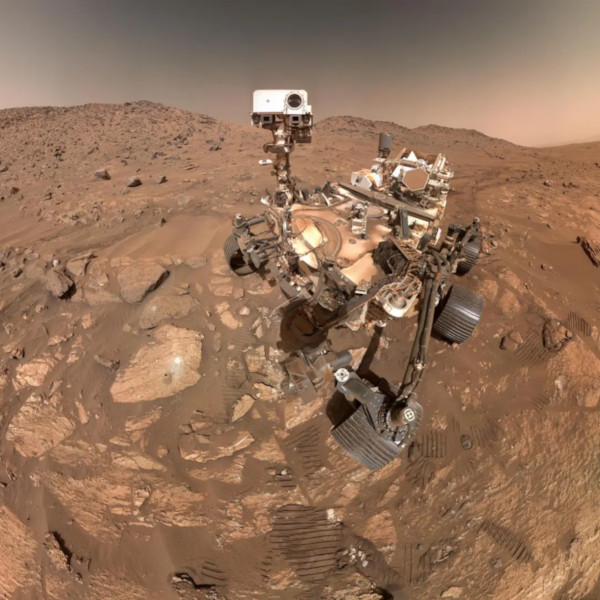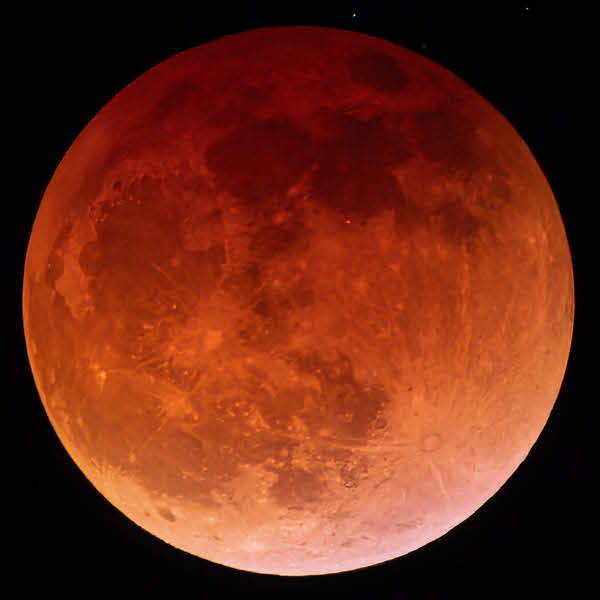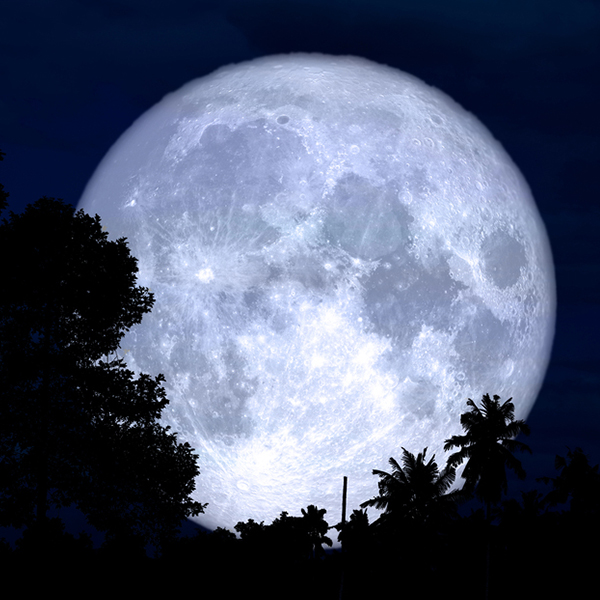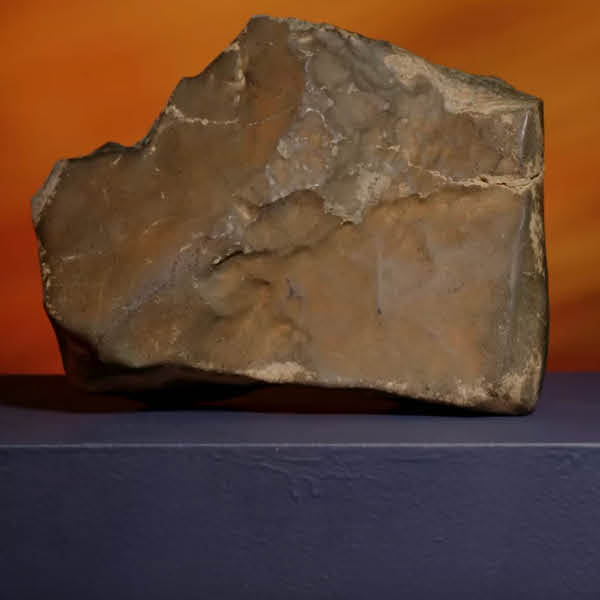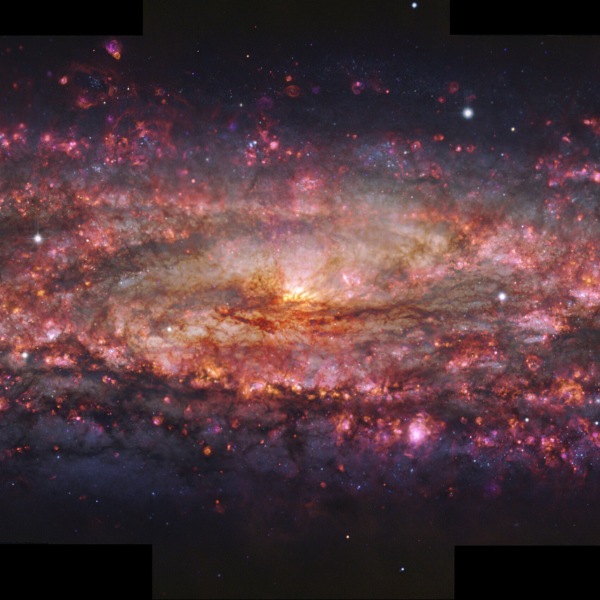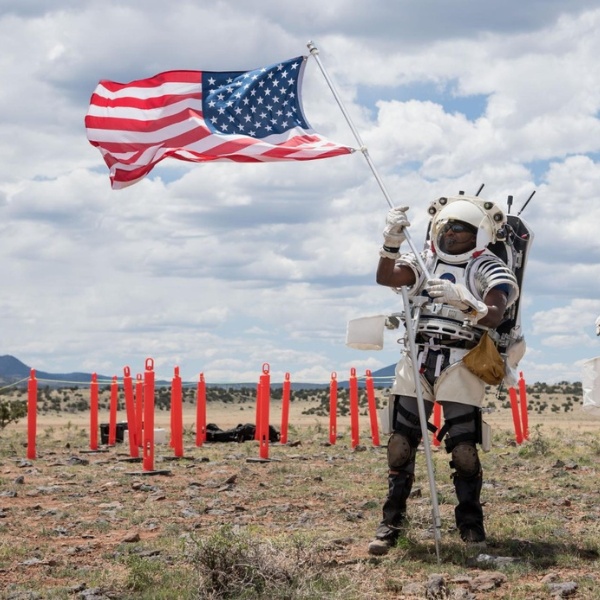
Photo: NASA, ESA, CSA, STScI with processing by Joseph DePasquale (STScI)
The James Webb Space Telescope (JWST) continues to give us extraordinary views of the planets in our solar system. On the heels of incredible images of Jupiter, JWST has just released the clearest image of Neptune that we've seen in 30 years; we're able to see both the icy planet and its rings. Not since Voyager 2 became the first spacecraft to observe Neptune during a flyby in 1989 have we had such an incredible view.
Neptune, the last planet in the solar system—Pluto is now considered a dwarf planet—is located 30 times farther from the Sun than Earth. The planet is so far from Earth that it's the only planet in the solar system that was discovered using a mathematical equation rather than direct observation. There is so much unknown about Neptune, which makes JWST's images all the more intriguing.
In illustrations, Neptune is usually colored blue. This is because of the images taken by Hubble and Voyager 2 in visible light. The blue tint in these images is owed to the absorption of red light by the planet's methane-rich atmosphere. However, Webb’s photos were taken with its Near-Infrared Camera (NIRCam), and here, the planet is much lighter in appearance. The bright streaks and spots on the planet are methane-ice clouds, which reflect sunlight before it's absorbed by methane gas.
One of the most notable features in the images is Neptune's rings. While most drawings of Neptune do not show rings, these JWST photos back up earlier findings. Neptune's first ring was discovered in 1968, but it wasn't until Voyager 2's flyby that scientists could confirm the presence of multiple rings. Now, three decades later, JWST's photos clearly show the planet's rings and its faint dust bands.
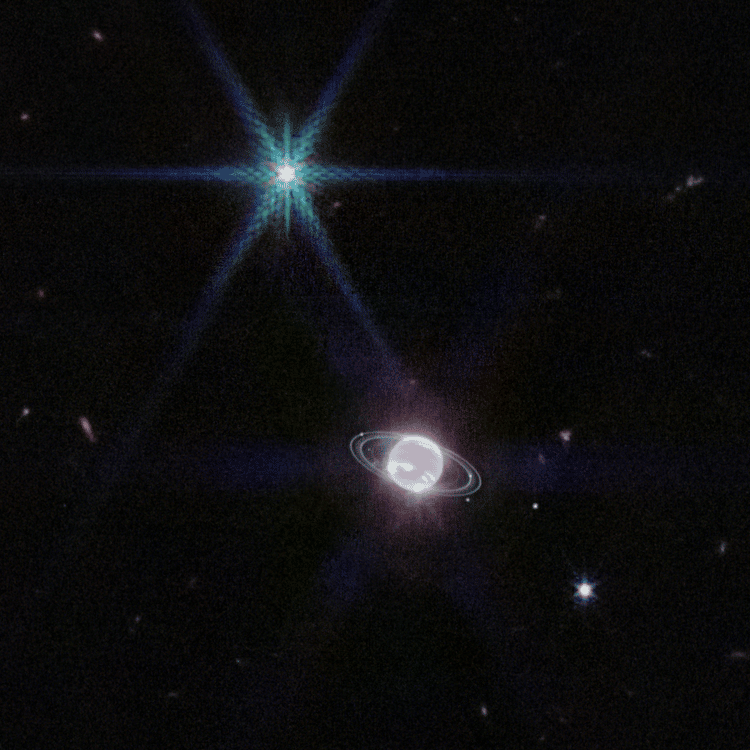
Photo: NASA, ESA, CSA, STScI with processing by Joseph DePasquale (STScI)
“It has been three decades since we last saw these faint, dusty rings, and this is the first time we’ve seen them in the infrared,” said Heidi Hammel, a Neptune system expert and interdisciplinary scientist for Webb, in a statement released by NASA.
On Twitter, Hammel couldn't contain her excitement in regard to the photos. “Not gonna lie. I ugly-cried when I saw THE FIRST JWST NEPTUNE IMAGES! ‘O M G – LOOK AT THE RINGS' I was yelling, making my kids, my mom, even my cats look. More than 20 years in the making, and JWST delivered,” she wrote.
As if that weren't enough, the photographs also give us a look at seven of Neptune's 14 known moons. In the upper left of one image, the moon Triton shines so brightly that it might be mistaken for a star. Its diffraction spikes are a signature of JWST images. This moon, which is covered in a frozen sheet of nitrogen, outshines Neptune in this photo because methane darkens the planet in near-infrared light.
Additional studies of Neptune and Triton are planned for the coming year, so we can expect more exciting images to follow.
James Webb Space Telescope captured the clearest image of Neptune in the past three decades.
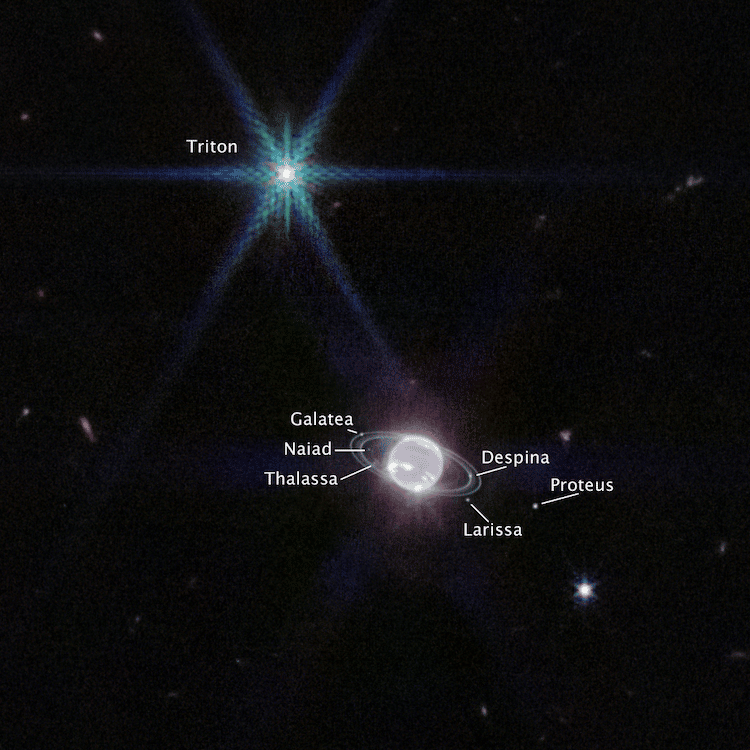
Photo: NASA, ESA, CSA, STScI with processing by Joseph DePasquale (STScI)
Not only do we see its rings and many of its moons, but a pulled-back view shows a nearby spiral galaxy.
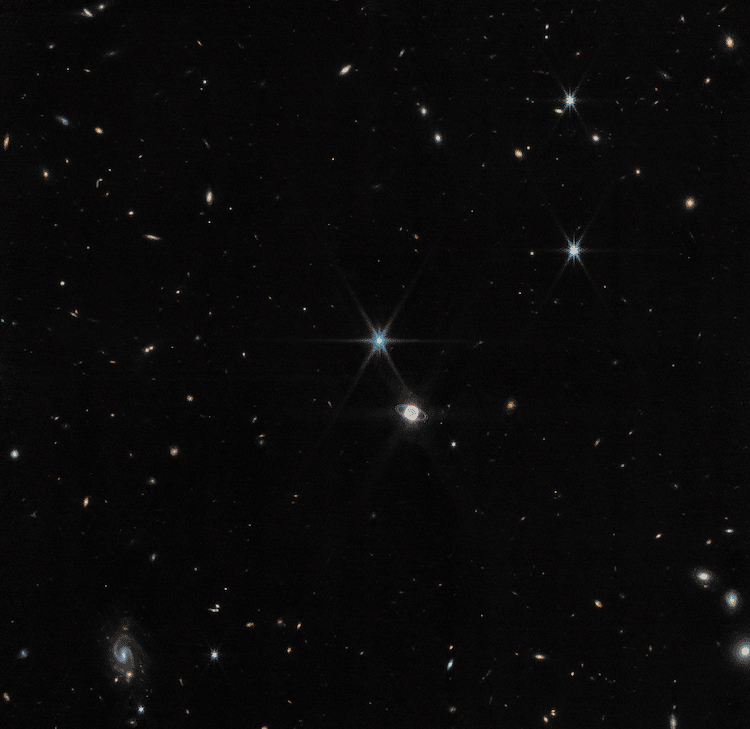
Photo: NASA, ESA, CSA, STScI with processing by Joseph DePasquale (STScI)
Related Articles:
Stunning Spiral Galaxies Captured by the James Webb Space Telescope
Spectacular ‘Cartwheel Galaxy’ Captured by James Webb Space Telescope
Comparing the Webb and Hubble Telescopes Side-by-Side Will Leave You Astounded
80-Mile-Wide Comet Hurtling Towards Earth Captured by NASA’s Hubble Telescope














































































